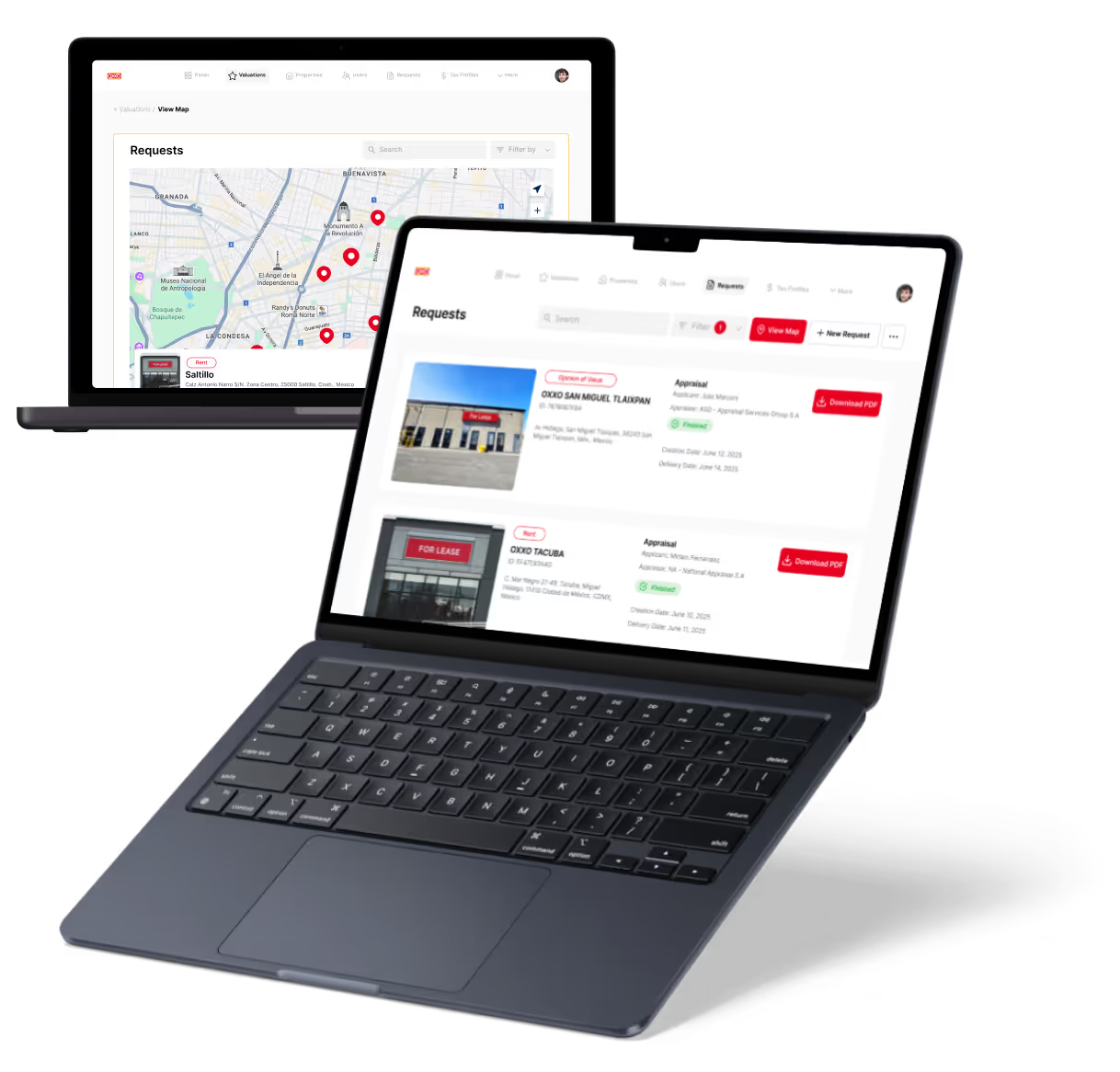Airtable vs Xano | 10 Factors to Decide the Best One
9 min
read
Compare Airtable vs Xano on scalability, backend logic, APIs, and compliance. Choose the right no-code or backend platform for your project needs

Airtable is a visual, spreadsheet-like database for teams who want to organize data, set up workflows, and collaborate without code. It’s perfect for content calendars, CRMs, and internal tools.
Xano, on the other hand, is a no-code backend platform that powers APIs and application logic behind mobile and web apps. It’s built for developers who need full control over databases, auth, and scaling—without writing backend code or managing infrastructure.
If you need an easy way to manage structured data, Airtable is ideal. If you're building production-grade apps with business logic, APIs, and role-based access, Xano is the better fit. This guide compares both tools across 10+ factors to help you decide.
Quick Comparison Table - Airtable vs Xano
1. What’s the core difference between Airtable vs Xano?
The core difference between Airtable and Xano lies in frontend vs backend focus.
Airtable is a no-code database tool with a spreadsheet-style interface, ideal for non-technical users who want to organize data, automate tasks, and collaborate visually. It’s great for lightweight apps, content planning, and internal workflows.
Xano, on the other hand, is a no-code backend platform that lets you build powerful APIs without managing servers. It’s made for developers or technical teams who want to power mobile apps, web apps, or internal tools with scalable, logic-rich backends.
Airtable stores and displays your data with built-in views and interfaces. Xano handles the logic, data processing, and API endpoints that connect to your frontend tools. If you need a simple data app fast, Airtable is ideal. If you’re building a real app that needs logic, roles, and speed, Xano is the better fit.
2. Ease of Use
Let’s begin by comparing how beginner-friendly each tool is.
Is Airtable easy to use for non-technical users?
Yes, Airtable is built for non-technical users. It feels like a spreadsheet but acts like a database. You can create tables, link records, add views (like Kanban or Calendar), and use automations without any code. Airtable also includes templates, a drag-and-drop interface, and visual tools for designing workflows and dashboards.
Its Interface Designer makes it easy to build internal tools or client portals visually. Users can set it up quickly for use cases like project tracking, content planning, or lightweight CRM. If you're looking for an approachable tool that doesn't require any backend knowledge, Airtable is one of the easiest platforms to get started with.
Does Xano require technical or backend development knowledge?
Xano is more technical than Airtable. It’s a no-code platform, but it’s built for those who understand APIs, backend logic, and relational databases. Users define data models, create API endpoints, and build logic flows using Xano’s visual backend builder. While no actual code is required, understanding how backends work is helpful.
It’s ideal for developers or technical teams building mobile or web apps without managing servers. Beginners can still use it with learning resources, but it comes with a learning curve. Xano is more complex than Airtable, but also more powerful in terms of backend control and application logic.
3. Database Limits and Scalability
Now let’s look at how well each tool scales as your data grows.
What are Airtable’s limitations with records and data storage?
Airtable has limitations that can affect scaling. On the Enterprise plan, you can store up to 250,000 records per base, and lower limits apply on Free and Pro tiers. There are also limits on attachment storage (e.g., 20GB per base on higher plans).
Performance starts to slow down with too many linked records, complex formulas, or heavy automations. Airtable is great for small to medium use cases but isn’t built for backend-level scale. It’s best suited for internal apps, not data-heavy products that require high performance or massive datasets.
How does Xano handle large databases and scaling?
Xano is built for scale. It uses PostgreSQL under the hood and allows you to model complex data structures with relations, indexes, and filters. It can handle millions of records with speed, making it suitable for production apps, mobile backends, and SaaS platforms.
Xano also includes caching, query optimization, and performance tuning features. You don’t need to manage the database yourself—it’s all handled in the cloud—but you still get advanced controls. If you need enterprise-grade data performance, Xano handles scale much better than Airtable.
Read more about:
4. Backend Logic and Automation
Let’s compare how both platforms help you build workflows and logic.
What automation and scripting features does Airtable support?
Airtable supports built-in automations that trigger actions like sending emails, updating records, or posting to Slack. You can create these workflows using a visual editor. Airtable also has a scripting block where you can write JavaScript to create more advanced logic or integrations.
However, it’s limited in scope—no branching, parallel actions, or advanced scheduling. Automations are ideal for light workflows like notifications or task updates. For complex backend logic, Airtable falls short and typically needs tools like Zapier or Make for external workflows.
How does Xano handle backend logic, webhooks, and workflows?
Xano offers powerful tools for backend logic. You can create custom API endpoints and define logic flows visually using its function stack. It supports conditional logic, looping, filters, data validation, user authentication, and more—all without code. You can trigger flows via API requests, scheduled tasks, or Webhooks.
This makes Xano ideal for apps that need decision trees, role-based workflows, or custom business rules. It’s more flexible than Airtable and gives developers complete control over backend logic, similar to what you’d build with code.
5. Hosting and Deployment
Let’s explore where and how each platform is hosted.
Can Airtable be self-hosted or is it cloud-only?
Airtable is cloud-only and fully managed by Airtable Inc. You can’t self-host it, access the database directly, or control the hosting infrastructure. All data lives on Airtable’s servers, and you access everything through the browser or apps. This makes it easy to use and maintain, but you sacrifice flexibility.
If you work in industries that require on-premise hosting, or you want complete control over infrastructure, Airtable won’t meet those needs. It’s ideal for teams who want a worry-free, cloud-based solution for organizing and sharing data.
What deployment options does Xano offer (cloud, on-prem, AWS)?
Xano is primarily cloud-hosted, but it also offers self-hosted options for enterprise users. You can deploy it on your own infrastructure using Docker or Kubernetes, making it ideal for companies with strict data governance policies. You can even host it on AWS, Azure, or private servers if needed.
This flexibility is one of Xano’s strongest advantages over Airtable. It gives full backend control—something critical for larger applications, healthcare systems, or teams that need HIPAA compliance or private cloud environments.
Read more about:
6. Performance and Speed
Now let’s compare how well each platform handles demanding tasks.
How does Airtable perform with complex or large datasets?
Airtable performs well with moderate data sizes, but once your base grows past 50,000–100,000 records, things may slow down. Views can lag, filters may take time to apply, and large automations might delay execution. Airtable isn’t designed for high-performance computing or transactional queries.
It’s optimized for usability and simplicity, not speed at scale. It’s perfect for workflows, project tracking, and internal use cases—but not for apps that depend on real-time responsiveness or large, high-speed databases.
Is Xano optimized for high-performance apps and APIs?
Yes. Xano is optimized for speed and performance. It uses serverless functions and scalable infrastructure that adjusts to your app’s load. You can handle large data operations, complex queries, and fast API calls without lag. Xano includes features like caching, indexing, and async processing to keep things running smoothly. Whether you’re powering a mobile app or a dashboard with live metrics, Xano is built to serve real-time backend responses quickly and reliably.
7. Security and Compliance
Let’s look at how both platforms protect your data and meet industry standards.
What compliance and security features does Airtable provide?
Airtable offers SOC 2 Type II certification, two-factor authentication, SSO (on Enterprise plans), and field-level permissions. It encrypts data at rest and in transit and offers audit logs and admin controls for large teams.
While secure enough for most SMBs and startups, Airtable doesn't offer HIPAA or ISO certifications. If your organization requires strong compliance guarantees, especially in healthcare or finance, you may find Airtable limited in this area unless you upgrade to a custom enterprise package.
Does Xano offer HIPAA, ISO, and advanced access control?
Yes. Xano supports HIPAA compliance, SOC 2, and role-based access controls, making it suitable for sensitive industries like healthcare and finance. You can manage permissions at API, data model, and logic levels. Xano also allows encrypted storage, secure credential management, and endpoint protection.
For enterprise customers, deployment can be isolated in private cloud environments or your own infrastructure. This gives your team full control over compliance, auditability, and access policies—far beyond Airtable’s cloud-only model.
Read more about:
8. Integrations and API Access
Let’s compare how each tool works with external platforms.
What integrations and API tools are available in Airtable?
Airtable offers native integrations with apps like Slack, Gmail, and Google Calendar. It also connects to thousands of tools via Zapier, Make, and custom Webhooks. Airtable has a REST API that lets developers perform basic CRUD operations on records.
However, the API has rate limits, and access is tied to individual bases. While it’s great for extending workflows, it lacks advanced API features like authentication layers, relational logic, or public-facing endpoints.
How does Xano handle API connections and external integrations?
Xano is an API-first backend, meaning every database table and logic function can be turned into an API endpoint. It supports REST and GraphQL, dynamic routes, authentication, and response formatting.
You can also consume external APIs inside Xano, process them with custom logic, and send outbound requests. It’s built to connect deeply with any app, frontend, or service. This gives developers full flexibility to build API-driven apps, handle webhooks, and integrate securely with third-party services.
9. Migration Support
Let’s explore how easy it is to switch from Airtable to Xano if needed.
Can you move data from Airtable to Xano easily?
Yes, but it takes a few steps. Airtable allows CSV export of each table, which you can import into Xano using its import wizard. You’ll need to recreate relationships and logic manually since Airtable’s structure doesn’t carry over 1:1.
However, for developers familiar with database modeling, the migration process is smooth. Xano also provides documentation on importing from Airtable and converting spreadsheet-based structures into backend-ready schemas. It’s a one-time setup but well-supported.
Does Xano offer import tools for Airtable users?
Yes. Xano includes data import tools for uploading CSVs and mapping them to your database models. While there’s no direct one-click migration from Airtable, many users have successfully moved data with minimal friction.
Xano’s team also offers onboarding help and guides for Airtable users making the switch. Relationships, field types, and structure may need to be adjusted, but it’s a reasonable process—especially for teams transitioning to a more robust backend.
Read more about:
10. Final Verdict
Let’s wrap up with a clear summary of when to use each tool.
When should you choose Airtable over Xano?
Choose Airtable if you’re building internal tools, tracking content or projects, or managing team workflows without needing complex backend logic. Airtable is simple, visual, and perfect for non-technical users. It’s best for teams that want to organize and share data in a user-friendly interface with some automation—but don’t need custom API logic or self-hosting.
When is Xano a better fit than Airtable?
Choose Xano if you’re building real applications—mobile, SaaS, or internal tools—that require secure APIs, backend logic, role-based access, or scalability. Xano gives you a full backend with no server maintenance. It’s ideal for developers or product teams who want to move fast without compromising performance, compliance, or flexibility. It’s the backend Airtable can’t be.
Created on
July 4, 2025
. Last updated on
December 11, 2025
.

FAQs
Is Xano harder to use than Airtable?
Can I use Airtable as a backend for my app?
Does Xano offer more flexibility than Airtable?
Is Airtable scalable for large projects?
Can I move data from Airtable to Xano?
When should I choose Xano over Airtable?







%20(Custom).avif)








